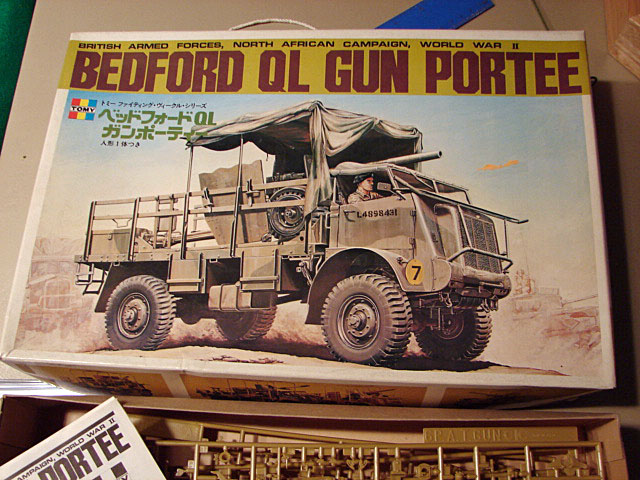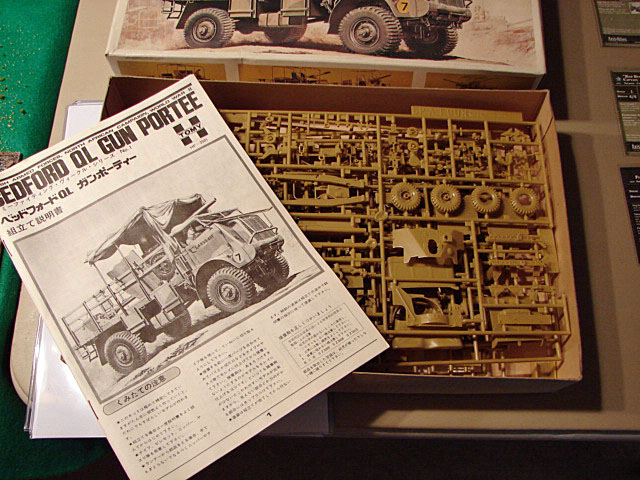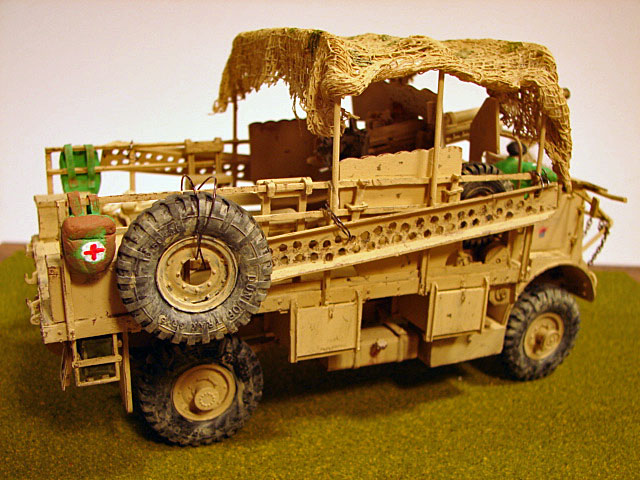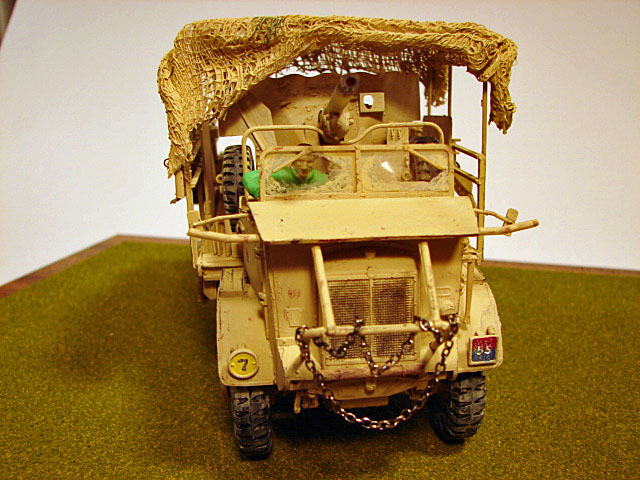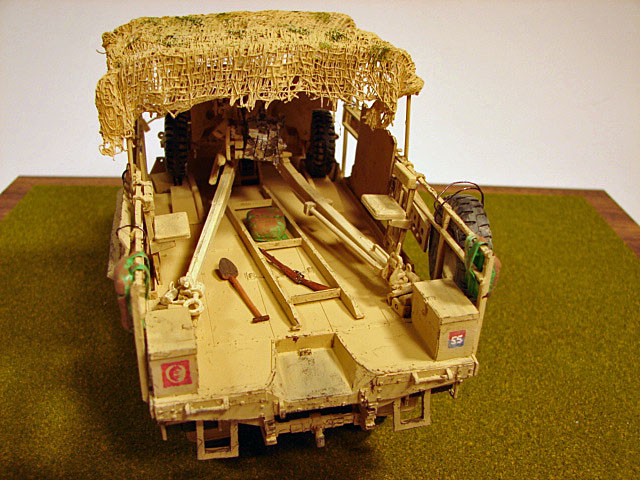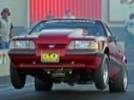As just mentioned, acrylic paints can be bought in department stores and craft centers can be good alternatives to the much thinner modelling brands such as Tamiya and Valejo. There's a chain of craft stores called "Michael's" that sell such crafting items as beading materials, floral arrangement supplies, scrapbooking supplies, decorations, art supplies, has a frame shop, and a bunch of other things. This place is a modeller's dream! A lot of what you find at very high-priced specialty hobby stores that cater specifically to kit modelers and model train enthusiasts, can be found in a craft store like Michael's. Plus, being a frugal New Englander, I use the 40% off coupon in the Sunday paper!!! ....I actually bought a secondary airbrush with a 40% off coupon. It's what my wife refers to is having the ability to "Think outside of the box"!
Folk Art acrylics are a perfectly usable grade of acrylic paint that comes in small squirt bottles, yet you get about four times the amount of paint than
you do in just one glass bottle of Tamiya acrylic paint, for instance. Now granted, I've moved away from using it on 100% of my kits, but it still finds it's way in certain areas more suited to it. The price is very much lower too, as a bottle will typically run a little over 80 cents....and when on sale, can be as low as around 50 cents! That's a bargain! Americana acrylics is another good alternative, also sold at Michael's. Other craft stores, such as A/C. Moore's, have similar acrylic paints too!
What's great about these acrylics is, there's a phenomenal range of colors to choose from. And most of these colors work great straight out of the bottle without any mixing, unlike paints like Tamiya, which in my opinion look horrible for brush painting right out of the bottle. I have used these craft store acrylics straight out of the bottle, as in the sand-colored hue you see above; and I've mixed just about any color I desire. The paints mix extremely well, and have a nice painterly feel to them (unlike the wet/watery feel and consistency of Tamiya). Coverage is outstanding, and hold up very well, I have come to find.
Before the airbrushers descend on me like a pack of wolves...please remember that I am talking in reference to a model that is totally brush painted. I know a lot of modellers that still refuse to use (or can't afford to buy) an airbrush. I thought an airbrush was out of my league....operation-wise....until my older sister mentioned she used on in a nail salon! Well, sheeeeat!!! Bought one and I never looked back. They are very user friendly, once you've done a little reading up on the mechanics of spraying, and of course...help from guys like you! All that said, I believe there are times these craft store acrylics are the only option for a specific purpose.
To mix the paints, you can use most any type of container or vessel, but I recycle old cat food plastic containers. Meow Mix is my preference...... a purrfect plastic container. Meow Mix, being plastic, cleans out easy, and I actually reuse them over and over again. I have used these for my diorama building processes too, as glue baths; and I use them in my gaming as draw cups for cardboard counters. Another great modeling use for them is as props for drying pieces and freshly painted pieces, as well as trash receptacles for small bits I want to throw away later.
Also of use is for armature material for building gaming and modeling dioramas. They make good filler for hills beneath clay or felt. And you can use them to glue small bits too, like model kit parts you want to paint, or gaming miniatures. Need to mix some washes? No problem! ....so the uses are endless!
To explain a little more on the techniques used and design thoughts…
The truck bed, with more storage and Jerry Cans, was a super pain. I including the winch system for the 6 Pounder gun. As you can see in the pics, the Folk Art acrylic paint covers well, and opaque with a nice flat finish.

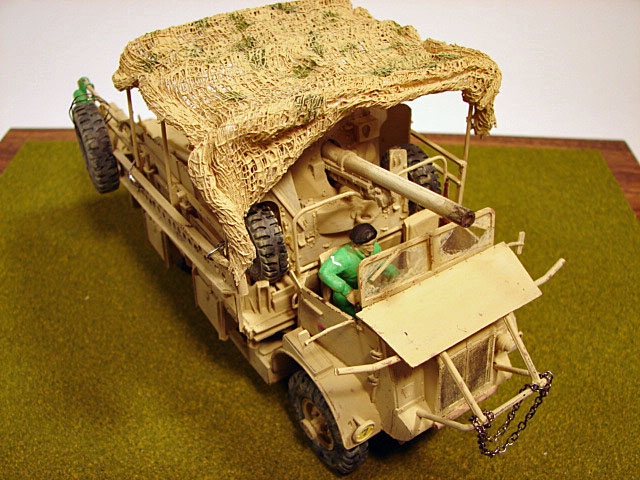
It also has a little bit of a mottled look, because of the coarse pigments used in their production. And again, this color was used straight from the bottle with no mixing required! The other cool thing about this paint is, you can water it down to thin it a bit, and at times I have found that necessary, but usually no need for thinning is required! Also, drying time is a lot more flexible than with Tamiya acrylics, which dry on the brush very quickly, and gunks up the bottle neck if you paint straight out of the Tamiya bottle....in this regard, Folk Art is far superior.
The kit came with a canvas (molded plastic, really) roof and system, but I opted out from putting it in place...I like that you can see the inside of the cab. The kit pictures on the side of the box shows the model with and without the roof, so either scheme apparently works.
A new experiment was in creating camouflage netting! The box art has a nice picture of camouflage netting, and I knew I wanted to incorporate it into the kit. There was no molded part for it, and just as well. And again, the kit has a cab roof to simulate a canvas roof, and though somewhat passable, it really isn't that great looking...hence my leaving it out of the build. My guess would be that a larger piece would have looked even less appealing, hence it not being included in the kit?
My solution was going for a netting approach using common household cheesecloth.....the kind you buy in the supermarket or household department in most any department store. It costs just a couple dollars for a package, and the stuff goes a really long ways. It is awesome for use as netting in modeling, but I also use it for netting in gaming gear! I have had the same package for awhile now, and have used it in this model and several miniatures gaming diorama accessories, and it will be used for many more.
I cut a section of cheese cloth....which I then brushed down with a craft brush, and mixture of equal parts water and Elmer's White Glue (the elementary school staple!). The glue was mixed with water in the aforementioned Meow Mix container....I brushed it on in a few layers, with the cheesecloth over some newspaper. I then rolled up the two sides to simulate the canvas netting being "rolled" up onto the overhead truck-bed frame. I then placed it onto the frame....the glue having started to firm up enough to let me "sculpt" it a little.
I wanted a rolled effect on the sides, and a wind-blown tattered effect on the edges. This stuff is great for 1/35 scale work, as the mesh is pretty darned perfect to my judgement. When I use this on my 15mm wargaming dioramas, I tend o double it up to give the illusion that the mesh isn't so big on that scale. Anyway, next came some paint....I used Folk Art "Desert Sand", making sure not to apply it too thickly, too quickly. I wanted to avoid filling the holes inbetween the cheesecloth "netting" with paint.
It's BOOM BOOM time! The 6 Pounder gun was actually a real joy to build. I had always admire the gun and have thought many times I'd like to build a model of one....I have an affinity for canons of the Civil War era; this gave me a nice taste of doing a substantial support weapon. It fit together very nicely, and is actually a model all to itself, really!
One place I decided to deviate way off course were the gun ramps. These ramps came with the kit solid, and they looked so fake it bothered the heck out of me. The ends have a nice U-shaped hook used to secure onto the back of the truck bed, but that's where the nice detail ended for these two parts. My solution to spice them up a bit was to drill traction holes in them! I used a pin vice, and drilled each hole in a pattern simulating ones perhaps done in the field, and not necessarily in the factory. I think it adds to the visual appeal tremendously!
I had to figure out how to handle a couple issues: Two very important things were missing from the kit, being the clear plastic windshield, and the decals!
First issue...the windshield. I found some scrap clear plastic from out recycling bin to use as a windshield. Cutting it to size, I applied the clear plastic to the windshield frame to the cab, and allowing it to dry
overnight, I then applied acrylic paint in the form of a very dusty and mud caked windshield, complete with wiper pattern.
I was also put the roll-bar like object you see in the rear of the cab...the round center is to accommodate the gun barrel when loaded aboard.
And then next came the second issue: With no decals in the second-hand bought kit, I decided to hand paint them. I looked up references on the Internet, and cross-matched it with the instructions, and decided on the pattern you see.
I then decided to try an experiment harkening back to my days as a sculptor...a LONG time ago! Field packs and a medic kit! I wanted to hang these on the railings for a more battle ready look. I used an air drying clay from a maker called Prang (who also make some very nice low-cost colored pencils, I've been told), and molded the rough shape I wanted. In truth, I was never really happy with the end result of these bags, but they are 'OK'.
Anywhoo...the great stuff about air-drying clay (as opposed to the oven bake stuff, like Sculpy) is that it dries hard withing a few hours and then is totally workable to be scribed, or just painted directly! I use this stuff for many gaming projects for my 15mm miniatures; makes great obstacles, and for sculpting bombed out buildings! This one block of Prang clay is about 12' X 4" X 2" and costs well under $10 USD at the aforementioned Michael's Craft store....plus, I bought it with one of their weekly flyer coupons for 40% off!
Now that's thinking outside of the box!!! This clay is wonderful, by the way. It comes in a sealed foil pouch-like container, which is moist inside...as long as you immediatly put ot in a zip-lock bag....I use a freezer bag, and try and get all the air you can out of it, you'll avoid trouble. You can also put an old wet facecloth in the bag to keep the "juices in"!
So on the field bags, I was not necessarily looking for drop-dead detail and accuracy, as much as the suggestion of the objects...hence, you won't see a lot of folds in the canvas. I used some elementary sculpting tools to fashion the bags, which....yup....bought at Michael's Craft store, with a 40% off coupon!!!
Then I used the blade of my craft knife to make slits in the tops of the bags, insert the "straps" in the slits, and gently mold the clay back around the straps. This was all allowed to air dry for several hours. Again, this stuff is brilliant, as it hardens up just like you threw it in a kiln. It actually works a lot better than the home-bake clays, like "Sculpey".
Next came a little superglue on the straps to ensure they don't pull out, especially when I go to attach them to the railings. Next, I painted the bags with Folk Art acrylics...Olive Green, including the straps. When you paint the tape, it actually makes it much easier to "shape" as you bend it arond things, or in nooks and crannies. Next came a cross for the Medics bag.
So I went a little more in-depth with techniques than I intended, but it was such an advancement in my building skill, I was really moving into different levels of new skills each step along the way. I consider it one of my best kits to date!
